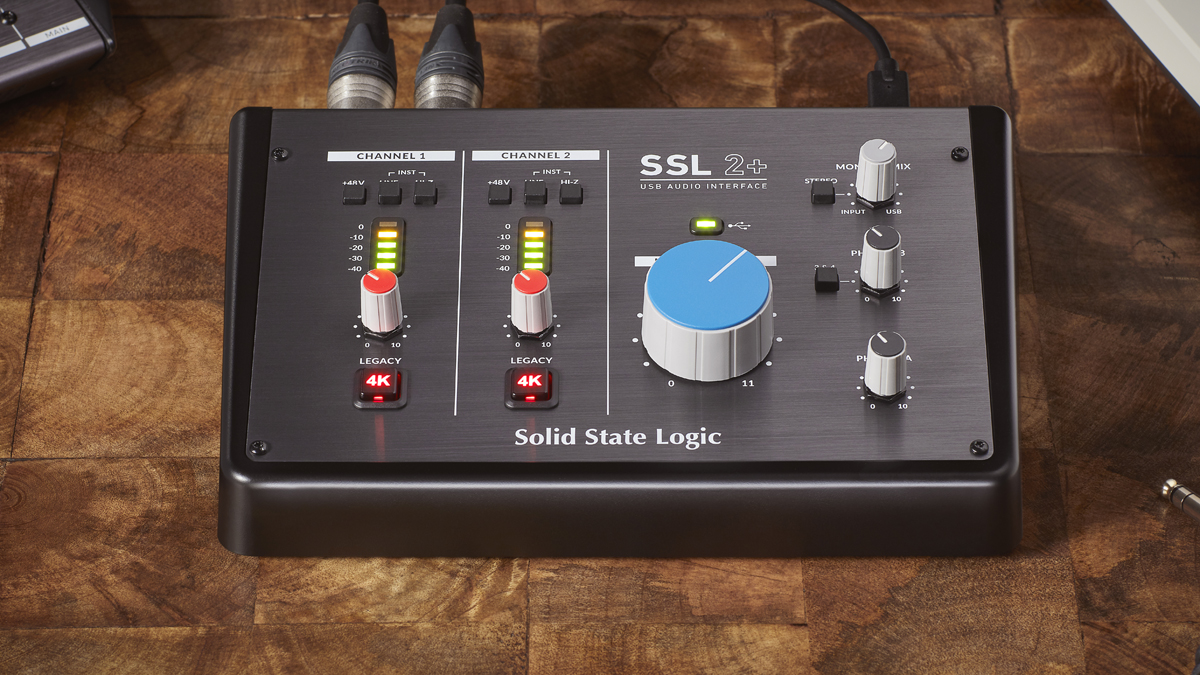MusicRadar Verdict
The Solid State Logic name and sound from a piece of budget audio gear? Somebody pinch us, this isn’t happening...
Pros
- +
Great, honest monitoring
- +
The 4k button does add ‘a sound’
- +
Solid build quality
- +
Great signal path for the cash
- +
Solid suite of software
Cons
- -
Some won’t like the RCA outs on the 2+
MusicRadar's got your back
What is it?
SSL’s 2 and 2+ audio interfaces were the ’surprise’ announcements for many at this January’s NAMM show. Compact interfaces with pro features and connectivity, they promise, more importantly, an affordable version of ‘the SSL sound’, bringing the feel of a gazillion recordings made in 7-figure recording studios, within reach of everybody.
That’s the theory, and the cost-versus-sound thing is why they were the big news at NAMM. However, the less-asked but more obvious question is: why the heck has it taken SSL so long? Focusrite, for example, has been knocking out pro-level, consumer-priced interfaces for donkey’s years, more recent models of which have been giving you that ‘Air sound’ from Focusrite’s original ISA mic preamp at the famous AIR Studios.
Similarly, Audient’s low(ish) priced interfaces have the sound of their famous console, while the ubiquitous Neve sound - the big SSL competitor from back in the day - can be found everywhere, from Steinberg’s latest interfaces to products from, well, Neve of course!
Then there’s UA, Trident, EMI, API and others. These are the sounds we all crave, apparently, but they can all be found in modern, cheap hardware and software equivalents and recreations. So why all the SSL fuss? What do these interfaces bring to the table that we don’t already have, and just what is so special about that Solid State Logic sound?
To many, it’s one that defined the ‘80s, an often large, more aggressive and precise sound from the company’s 4000 E console during the earlier part of the decade, followed by a softer, more rounded sound from the later G-series. That 4000 sound is covered with just one button press on these new interfaces which initially seems a little too easy - the entire sound of a decade behind one button - but it’s designed to offer what SSL say is a “unique ‘Legacy 4k’ analogue enhancement”.
But first, let’s take a look at the overall specs. We have both the 2 ($219/£189/€229) and 2+ ($289/£249/€299) models on test, the main difference being that the 2+ adds two outputs to the 2-in, 2-out configuration of the 2, MIDI In/Out plus an additional independent headphone out (with both being able to monitor different mixes).
Otherwise, the input configurations, build and specs are identical, with two combi mic/line inputs with Hi-Z (impedance) options for switching between guitar and bass signals or those from synths or drum machines. A +48v option also allows the connection of both condenser and dynamic mics. Below these switch options are peak level meters, Gain dials and those 4k buttons that we’ll come to.
Outputs for both units are standard jack, although the 2+’s extra outputs are phono type connectors (the main outs being either type). With the 2+’s extra headphone out, you also get another rotary to control its level on the front panel.
Both units feel very sturdy and well built. The design is quite old school, with a livery to reflect that SSL heritage, and everything does feel ‘pro’, with that solid build and smooth operation making you feel like these interfaces belong at a higher price point.
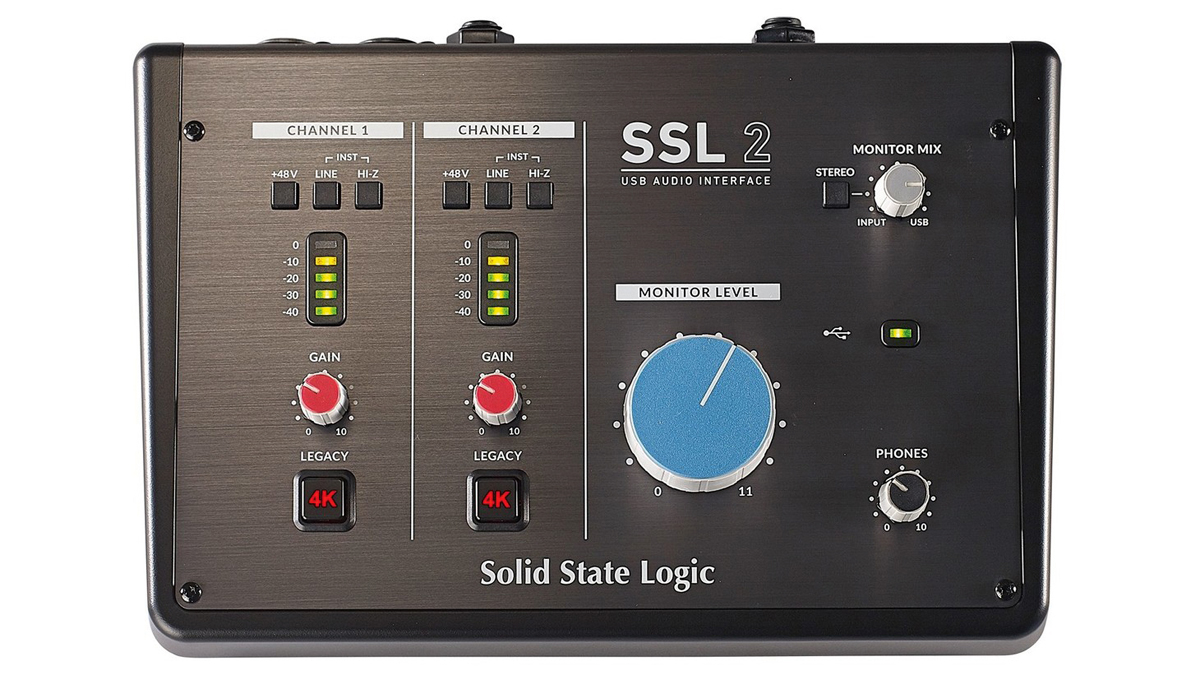
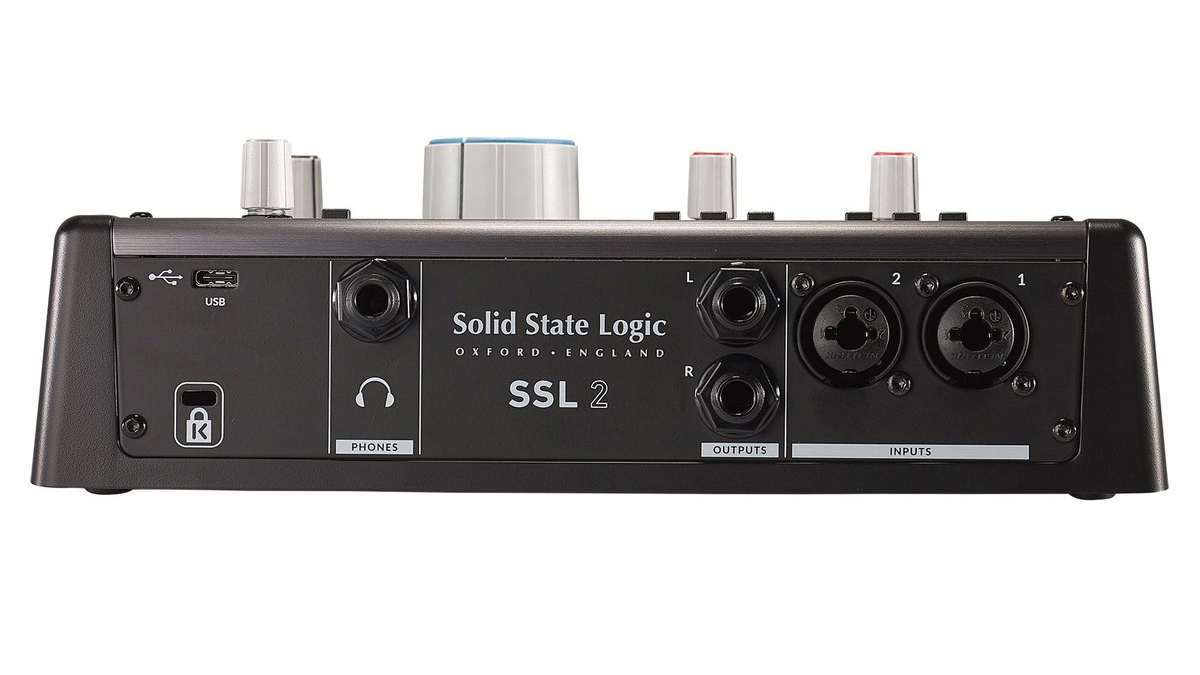
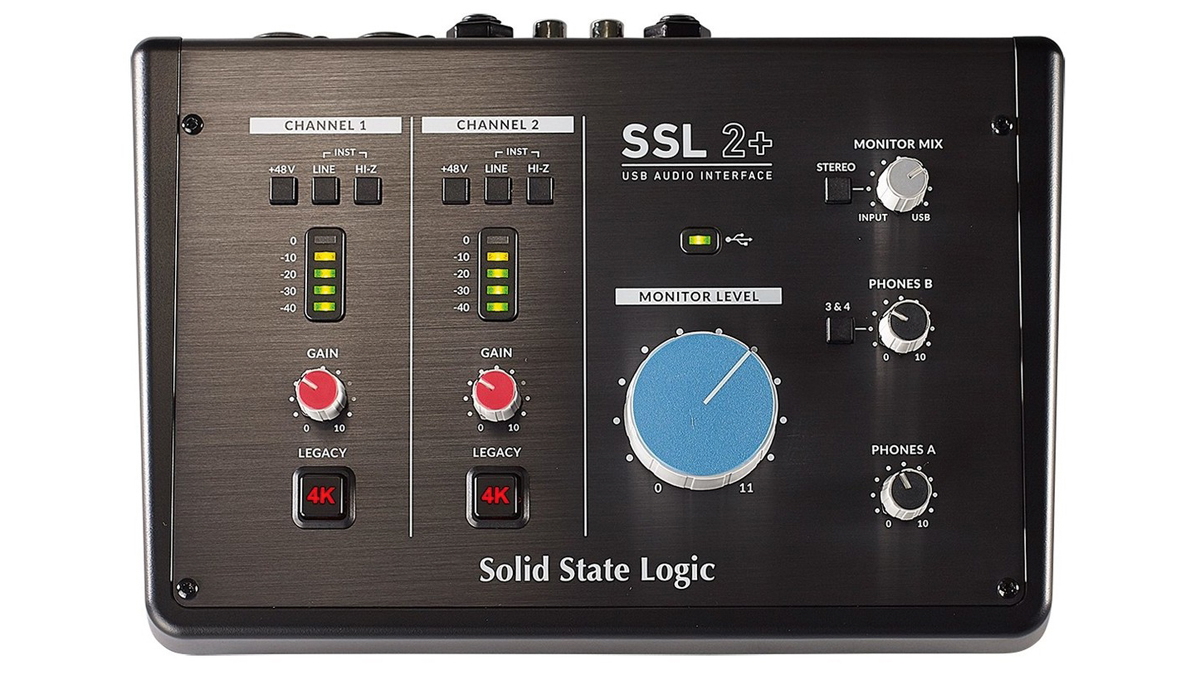
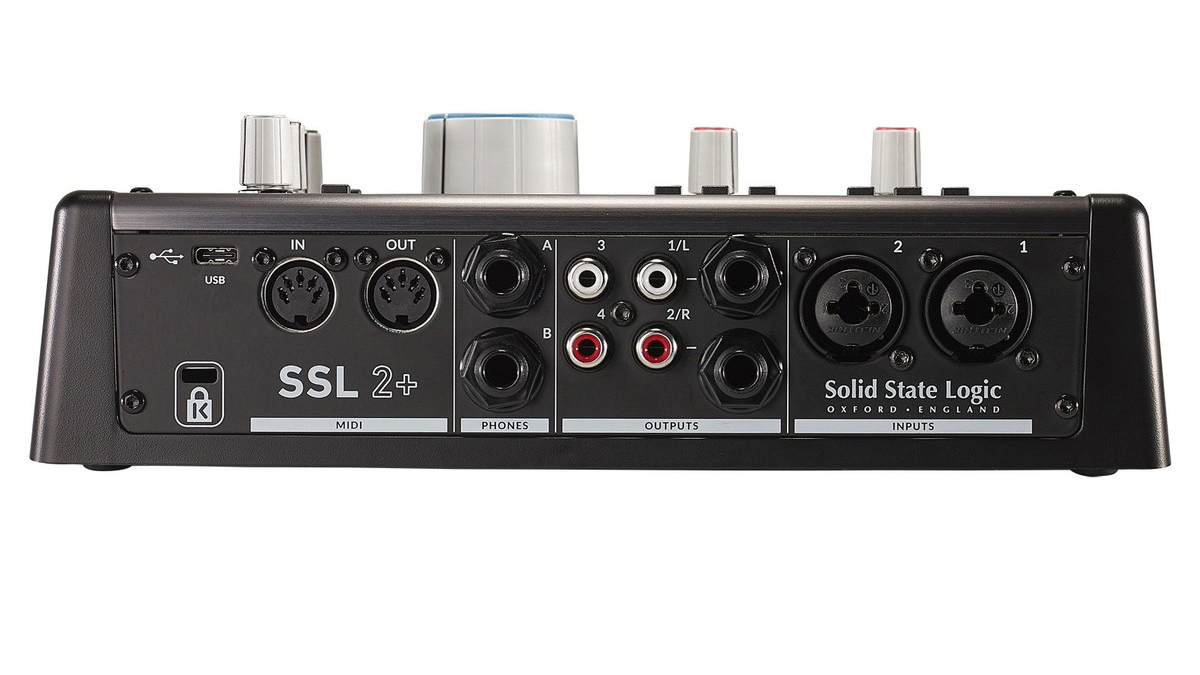
Performance and verdict
There are several facets of a typical interface test, not least how the main outputs sound for direct monitoring, and we were fortunate to have a number of more expensive reference interfaces in for another test against which we could line the SSLs up.
We’re happy to announce that the SSL’s monitoring sound is right up there with interfaces that cost twice as much - better,l in fact. Detail and honesty shine through, as you’d expect. Recording-wise, it’s crystal clear again, and there was little or no noise apart from when we cranked up the input on a not-so-clean source. So far, so great - let’s check the 4k ‘money button’.
Here, you may be disappointed, especially if you’re expecting to be suddenly transported to some kind of Aerosmith or Springsteen recording session; the 4k effect is something that people do argue about (just Google it - see what we mean?) and its effect is not exactly written in stone. Add presence? Yes. A bit more high-end zing? Yes. Is it life-changing? Not really, but it’s nice to have (and to be able to say ‘I’ll just sprinkle a bit of SSL 4k on that for you’ to any passing muso).
This end of the interface market is not exactly thin on options, and we’ve already mentioned just a few of the names who’ve produced good quality audio interfaces for decent entry-level sums of money. So SSL is entering a crowded arena, but it can undoubtedly rely on its name to shove a few others aside to make room, and these interfaces will also give it a lot of clout. They’re well built, sound great, have that magic button and cost silly money for that name (and people pay a lot more for that name, believe us!).
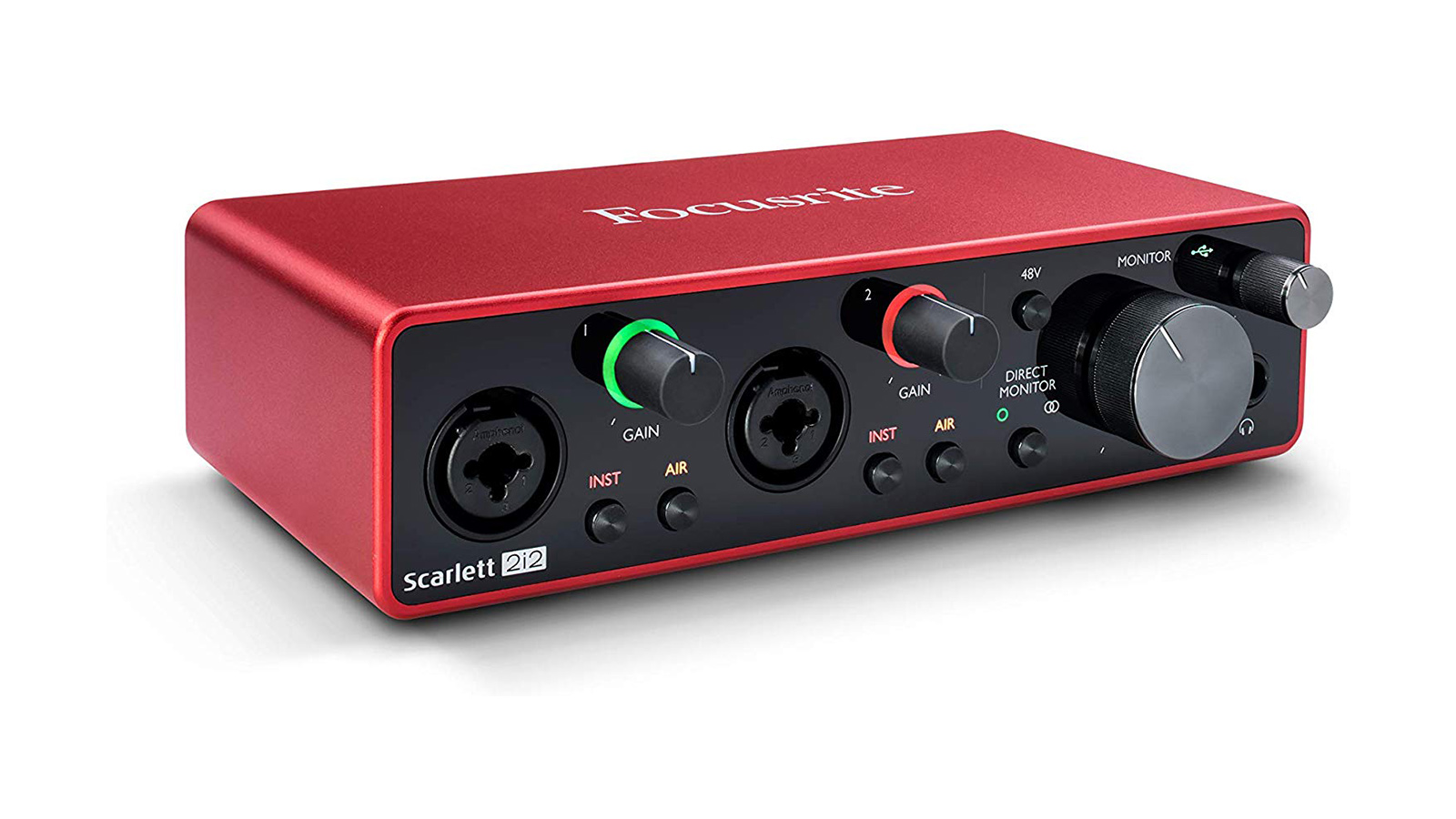
• Focusrite Scarlett 3rd Gen
• Audient iD4
• Native Instruments Komplete Audio 2
We suspect that this might just be the start of a whole range of interfaces from SSL and can’t wait for those with more connectivity options. The burgeoning number of hybrid studio owners who’d love to plug their boutique synths into their computers via high quality SSL preamps and 4000 colouration would certainly lap them up.
So, is either of these interfaces for you? Certainly, if you’re starting out, they are both great options, and also fine choices for a second interface to take out and about. Of the two, we’d definitely opt for the 2+, which gives you that added output flexibility and the chance for two people to collaborate with some ease, thanks to the extra headphone socket. In fact, we’ve been enjoying the 2+ for much longer than our test process required and are secretly hoping we don’t get the call to return it.
MusicRadar verdict: The Solid State Logic name and sound from a piece of budget audio gear? Somebody pinch us, this isn’t happening...
The web says
"Overall the SSL 2/2+ is a fantastic sounding, well performing audio interface with high quality components. It joins the competitive market of entry level studio gear, placing 40+ years of technology into a product that although is a little more expensive than others, outperforms them all. If you have a little extra money to spend on an interface, this should be the one." Mixdown
Hands-on demos
Thomann
Podcastage
Sweetwater
GAK
Specifications
SSL 2
- 2-In / 2-Out USB-C Audio Interface
- 2 x SSL-designed microphone preamps
- Legacy 4K - analogue colour enhancement, inspired by classic SSL consoles
- Professional, high-current grade headphone output
- 24-bit / 192 kHz AD/DA AKM Converters
- Easy-to-use Monitor Mix Control
- Balanced monitor outputs
- SSL Production Pack software bundle
- USB 2.0 bus-powered audio interface for Mac/PC
SSL 2+
- 2-In/4-Out USB-C Audio Interface
- 2 x SSL-designed microphone preamps
- Legacy 4K - analogue colour enhancement, inspired by classic SSL consoles
- 2 x Professional, high-current grade headphone outputs: create a second independent headphone mix
- 24-bit / 192 kHz AD/DA AKM Converters
- Easy-to-use Monitor Mix Control
- Balanced monitor outputs
- Additional unbalanced RCA outputs for easy connection to DJ Mixers
- MIDI I/O
- SSL Production Pack software bundle
- USB 2.0 bus-powered audio interface for Mac/PC
Computer Music magazine is the world’s best selling publication dedicated solely to making great music with your Mac or PC computer. Each issue it brings its lucky readers the best in cutting-edge tutorials, need-to-know, expert software reviews and even all the tools you actually need to make great music today, courtesy of our legendary CM Plugin Suite.
“I used everything I knew about music”: How Green Day exceeded expectations with their most ambitious song
YouTube just added AI tools that makes musicians, library music and video editors redundant
“Every one of them said yes without hesitation": Hank Marvin and Roger Taylor have just remade a '60s classic for charity
